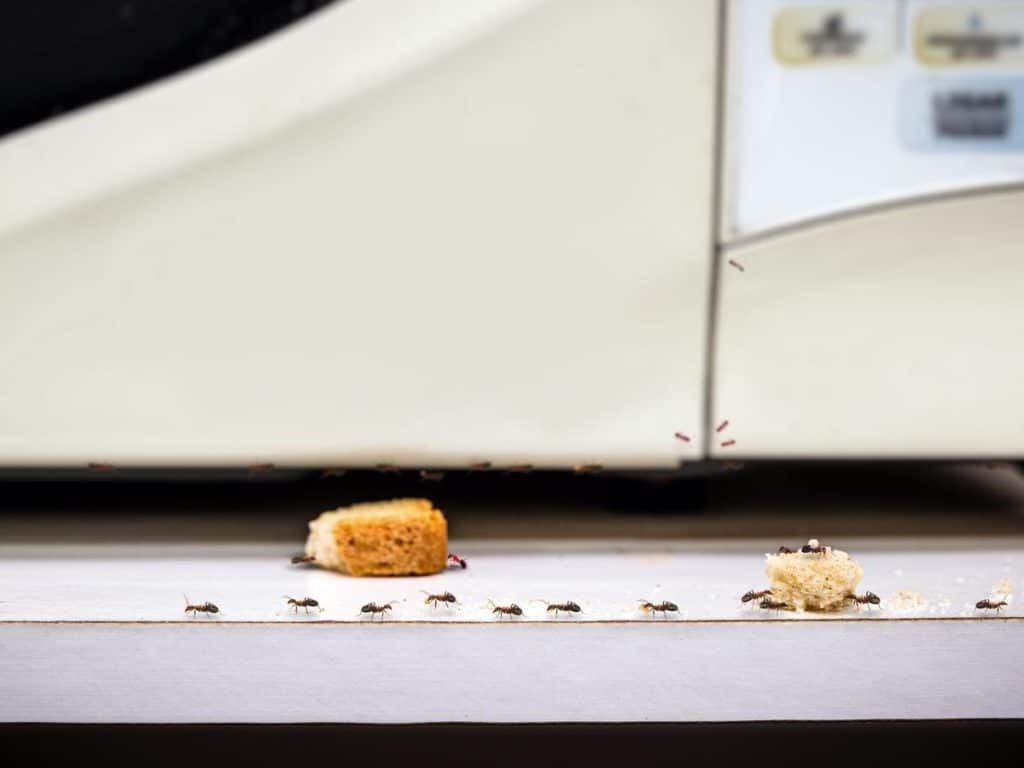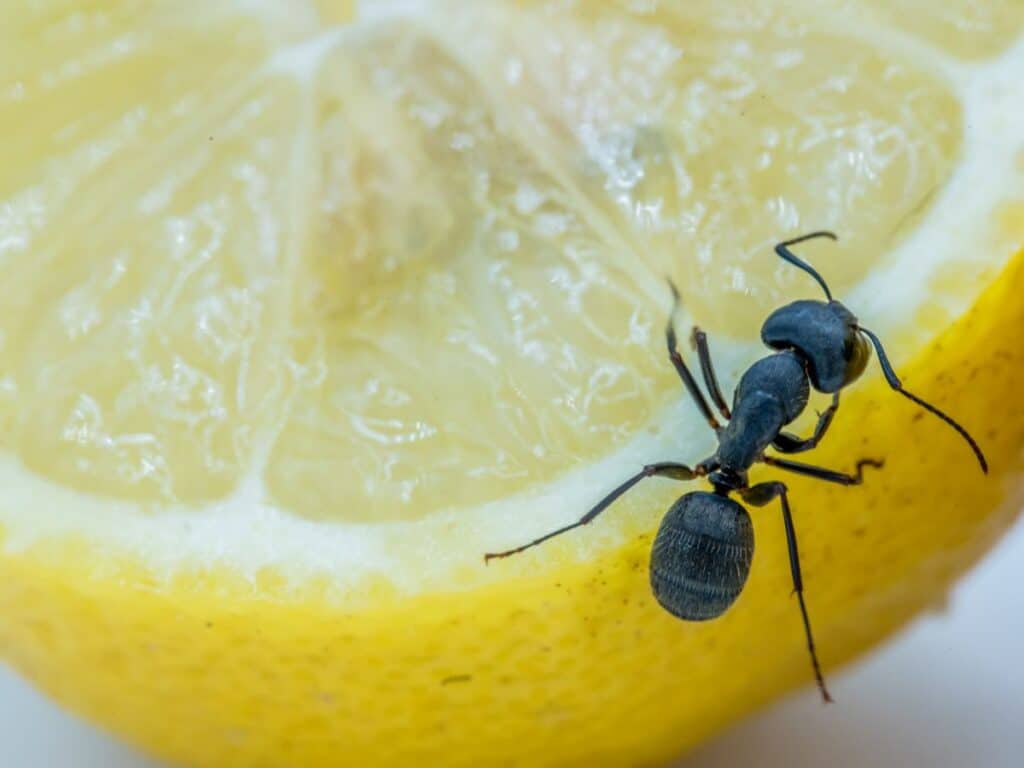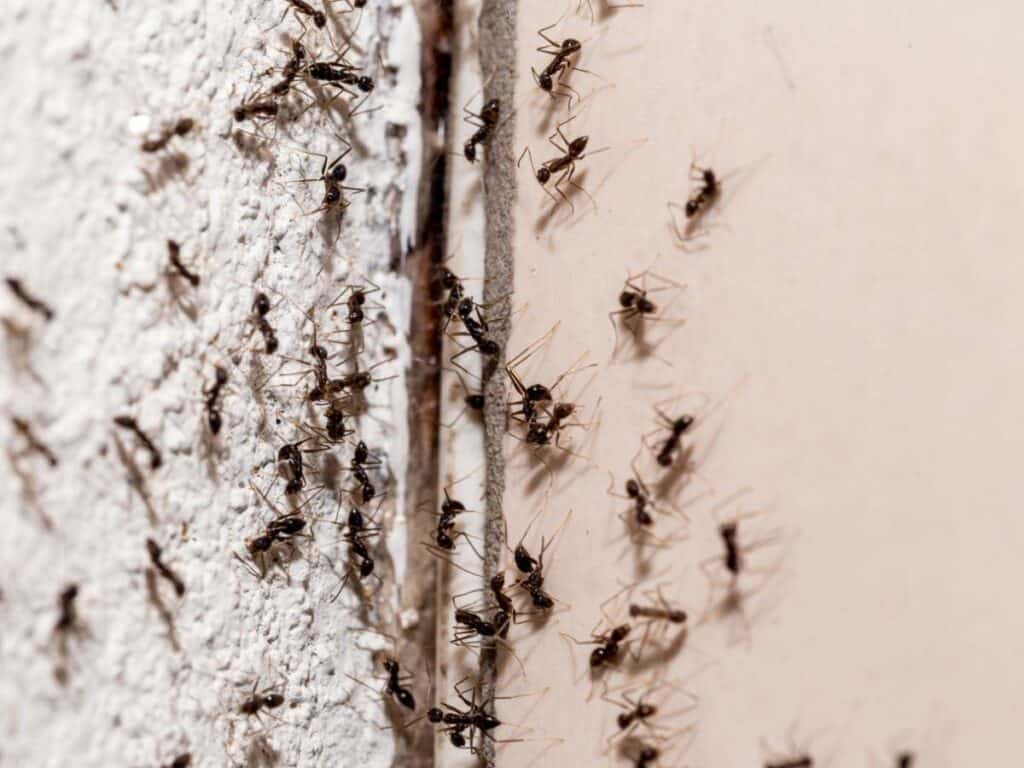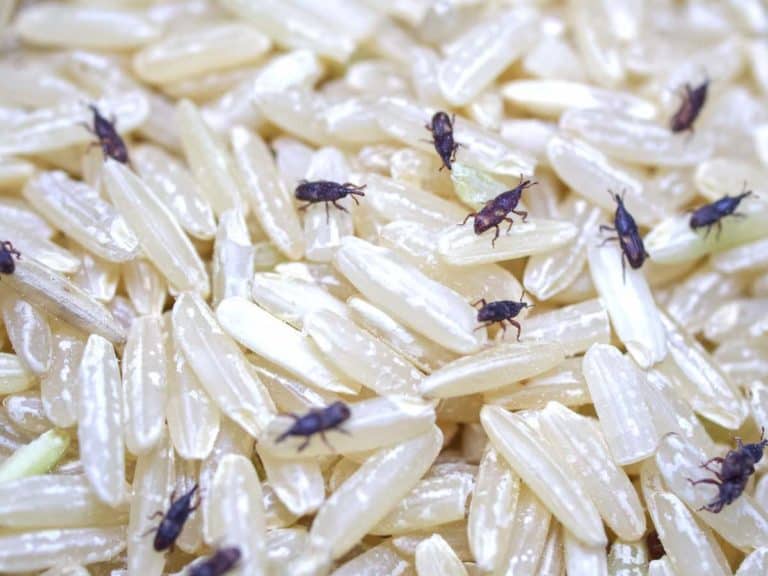How to Get Rid of Ants in the Microwave
One of the main reasons why ants invade homes is that they are looking for food in order to keep the entire colony alive. No other part of your abode is brimming with grub more than the kitchen. Just about anything that comes into contact with food can attract ants, and that includes the microwave.
To get rid of ants in the microwave, first rid the kitchen appliance of grease and food particles. Afterward, kill ants by wiping down the interiors with soapy water. Ants can be exterminated, too, with baking soda and sugar. It’s also a good idea to erase any ant trails to prevent a reinfestation.
Whether dead or alive, ants can easily turn a microwave meal from delicious to atrocious!
If you are frustrated that you cannot reheat or cook food in the microwave without ants feasting on it, continue reading. Below, you will come across some foolproof tips and tricks on how to get rid of ants in the microwave effectively. And since they can also get rid of ants elsewhere, you can enjoy an ant-free kitchen, too.

But before anything else, let’s give an answer to this pressing question…
Can a Microwave Kill Ants?
In general, microwaving ants for a few seconds is not enough to kill them. It can take a few minutes before ants die in the microwave, as their tiny bodies can take a while to heat up. Coming into contact with food or scraps of food hot enough will kill ants in the microwave.
It’s true that ants survived whatever it is that killed the dinosaurs as well as wars that wiped out millions of people from the face of the planet. However, it isn’t true that ants can survive the microwave.
Here’s the reason why your microwave failed to kill ants when you tried to nuke them once: you didn’t microwave ants long enough. But had you microwaved ants for a few more minutes, you would realize that they are not at all that invincible within the confines of a microwave — you would have surely heard small popping sounds.
The following are why ants do not die in a microwave right away:
- They have very little water in them — microwaves work by causing water molecules to rub against each other.
- Because they are very small, ants tend to lose heat very quickly.
- Chitin, the material that makes up their exoskeletons, can shield them from high temperatures.
- Some places in a microwave are cooler than the rest.
The bottom line is that you can kill ants by microwaving them for a longer period of time. Or you can follow the steps on killing ants in the microwave below and save electricity — so don’t stop reading now!
What Can You Do to Kill Ants in Your Microwave?
A mixture of dish soap and water can kill ants in the microwave. Soapy water also gets rid of the trail of chemicals ants leave behind for the rest to be able to find the microwave. A mixture of baking soda and sugar can kill ants in the microwave and also in the nest, from the queen to its babies.
You can leave the microwave running for a few minutes to kill the ants in it. However, this is a complete waste of electricity and may damage your microwave, too — it’s a terrible idea to run a microwave empty.
It’s a good thing that there is a quicker and safer way to rid your microwave of ants, and it’s by wiping down its interiors with a sponge dipped in soapy water. This works effectively as dish soap can suffocate ants until they breathe their last. But before you give this solution a try, remember these two very important things:
- Unplug the microwave beforehand.
- Wring out excess soapy water from the sponge.
While it’s true that ants in the microwave (and elsewhere in your kitchen) are a nuisance, it’s still a must that you maintain your safety and that of your loved ones. It’s also a good idea to keep your microwave out of harm’s way.
And that is why you should bear in mind the two safety tips mentioned above.
How to Use Ant Dust
One of the most popular commercially sold insect killers is ant dust. Despite what it’s called, the product is highly effective against many insects other than ants.
Some of them include bees, centipedes, cockroaches, ground beetles, millipedes, silverfish, slugs, spiders, ticks and wasps. Of course, it can kill all types of ants, from carpenter ants to fire ants.
Deltamethrin — this is the active ingredient of ant dust.
According to a report by the National Pesticide Information Center (NPIC), deltamethrin is low in toxicity when touched or breathed in.
On the other hand, it’s low to moderately toxic if eaten.
So, in other words, caution must be practiced when using ant dust to keep the microwave off-limits to ants.
Ant dust comes in a bottle whose cap allows it to be used as a shaker. For ridding the microwave of ants, a small amount of the product may be placed at the back. It may also be applied in areas that give those ants access to the kitchen.
Most ant dust brands are waterproof and can work for up to 8 long months.
Best Natural Ant Baits
And now, here are four things that you may try to free your microwave of ants:
Dish soap and water mixture
Wiping down the interiors of your microwave with soapy water is like hitting two birds with one stone: it lets you kill ants and get rid of grease and food particles, too.
To make an ant-zapping solution, combine one part dish soap and two parts water in a bowl. Mix, dip a sponge in it, wring out excess and wipe away those ants and anything else that’s not supposed to linger in your microwave. Use a damp kitchen towel to remove excess soapy water and allow the microwave to air dry.
Baking soda and sugar
You can kill ants not only in your microwave but also those that are waiting in the nest for the meals to arrive. It’s none other than by making a homemade ant killer using baking soda and sugar.
Baking soda can kill ants by altering the pH levels in their tiny bodies. But because ants know that baking soda can kill them, they will do anything and everything necessary to avoid it at all costs.
This is when the importance of adding sugar, which is something that ants find irresistible, to baking soda comes in.
Don’t just add any sugar — use confectioners’ sugar, the kind that’s fine powder.
All you have to do is mix equal parts of baking soda and confectioners’ sugar. Transfer to a small dish and leave it in the microwave to allow the all-natural insecticide to do its job.
Corn syrup and baking soda
There’s no denying that ants love corn syrup. On the other hand, baking soda can kill them. And that is why combining the said ingredients allows for the creation of something that can attract ants and exterminate them afterward.
All you need to do is combine equal parts of corn syrup and baking soda. Place small dots of the mixture on a sheet of wax paper and cut them into small sections and place them around the microwave.
Peanut butter and baking soda
Other than corn syrup, you can also use peanut butter. Of course, peanut butter alone won’t rid your microwave of those annoying ants — you need to add baking soda to it, which is lethal to ants and many other small insects.
As expected, simply combine peanut butter and baking soda using a 1:1 ratio. Place dollops of the mixture on small pieces of wax paper and leave them in problem areas until those ants bother you no more.

Does lemon juice kill ants?
Lemon juice, unfortunately, does not kill ants. However, it’s very good at repelling them and other small insects, including many garden pests. Other than lemon juice, lemon rind also works as an effective ant repellent.
Besides driving away ants, lemon juice and lemon rind also help deodorize the kitchen and clean and disinfect all sorts of surfaces.
Store Bought Ant Baits
Online, available ant baits come in various shapes and sizes.
The most popular among consumers plagued by ants in their respective homes, of course, are those that are convenient to use, the kinds that are as simple to utilize as attaching them to some strategic areas and then leaving them alone to do their job.
Ant sprays containing all-natural ingredients are some of the best-sellers, too, especially among those who do not want to risk the health of their loved ones in an attempt to keep the home ant-free.
Terro Liquid Ant Baits
A box of Terro Liquid Ant Baits contains 12 baits on Amazon (affiliate). According to the manufacturer, you will see results in just a few days.
But complete control can take 2 to 4 weeks — it can take a while for worker ants who discover the baits and share the chemicals in them with the rest of the colony, which is a great thing for it will destroy each one of them.
To work, each bait should be placed where ant activity is noticed.
After the ant infestation is put under control, it’s recommended to keep using the baits, replacing them every 3 months or so to keep a reinfestation from striking.
Combat Max Ant Killing Bait
There are 6 baits included in a package of Combat Max Ant Killing Bait.
Its active ingredient is fipronil, which is used for controlling not only ants but also cockroaches, fleas, termites, ticks, weevils and others. Because ants that stumble upon the baits bring fipronil to the colony, an infestation can be brought to an end.
The manufacturer recommends using all 6 baits in the packaging at the same time for best results. It can take a few days for the ants to be eliminated. Replacing all of them every 3 months is recommended to fend off a reinfestation.
Homeplus Ant Killer
According to the manufacturer of Homeplus Ant Killer, it can kill worker ants within 24 hours only, thus allowing you to notice results without delay. However, it can take several days to get rid of the queen and the rest of the colony.
There are 4 baits in a package — they are encased in metal, thus giving them a child- and pet-resistant feature.
It works by using a total of 4 food sources for ants, all of which are unspecified. But its active ingredient is abamectin B1, which is a popular insecticide choice by the agricultural community.
For best results, it’s recommended to place all 4 baits in high and traffic areas.
Raid Max Double Control Ant Baits
Making Raid Max Double Control Ant Baits different from most other ant baits in the market is that there are 2 types of baits employed in order to attract ants and kill the entire colony.
As such, the manufacturer says that the product can reduce ant population in a few days only, although the baits will keep on doing their job for 3 long months.
Using all 8 ant baits included in the packaging at the same time is recommended for maximum effectiveness. The baits, by the way, have a child-resistant design so that you can have peace of mind as you wait for those pesky ants to disappear.

What Can You Do to Prevent a Reinfestation?
Keeping the microwave clean at all times is an effective way to keep ants at bay. It is also a good idea to keep various surfaces and other kitchen appliances spotless in order to keep them from attracting ants. To prevent a reinfestation, the scent trails ants tend to leave behind should be eliminated.
It’s not enough that you kill ants in the microwave. To prevent the same type of headache from bugging you for a second time, it’s also a must that you keep ants from invading your microwave all over again.
The good news is that it’s not that difficult to keep your microwave from being overrun by ants once more, ruining your culinary masterpieces (or TV dinner) each time. Besides the microwave, it’s also fairly easy to keep the rest of your kitchen appliances from being attacked by ants.
What you need to do is keep the kitchen clean and get rid of any remaining ant trails that can make it trouble-free for ants to locate your microwave et al. These are some of the best non-toxic ant trail erasers:
- Equal parts of water and vinegar.
- One part lemon juice to three parts water.
- A cup of water with 10 to 20 drops of peppermint oil.
- Rubbing alcohol diluted with water.
- A little cinnamon, cayenne or black pepper powder.
Just Before You Try to Rid Your Microwave of Ants
Ants first came into being between 140 and 168 million years ago. And because they have already been around long before the first human beings roamed the planet, you cannot expect them to leave you be that easily!
But by following the tips and tricks above, you can free your microwave of ants.
Keep in mind that just because you are able to rid your microwave of ants successfully doesn’t mean that those creepy crawlers will no longer invade it again. If you fail to keep your versatile kitchen helper spick and span, it is very much likely for ants to once more feast on anything that you put and leave behind in the microwave.
Related Questions
Can you spray insecticide in the microwave?
Spraying the microwave with insecticide is a quick way to put an end to an infestation alright. However, since a microwave is used for reheating and cooking food, spraying it with insecticide can cause poisoning. Insecticide can also cause a fire and damage the components of the microwave.
What foods are ants attracted to the most?
Ants are attracted to many foods. Leading the list is sugar, which, unbeknownst to many people, can be found in most food products, from bread, pasta sauce to beer. Some ants also love fat and grease, which is why they are still attracted to particles of food that contain absolutely no sugar.





